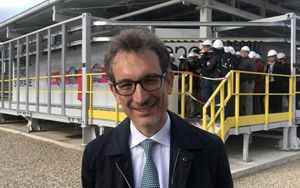(Finance) – “Innovation is at the service of a decarbonisation of our energy system and renewables are today the most competitive forms of generation. If we introduce more renewables into the system, the total generation cost of the whole system is lowered, if we had already achieved the objectives of the energy plan and climate 2030, ie with a generation of 70% from renewables, we would have reduced the cost of the whole system by 30%, and compared to pre-crisis levels. more sustainable and cheaper there are renewables, storage and grids “. That’s what he said Salvatore Bernabei, director of Enel Green Power and Thermal Generation of Enel, on the sidelines ofinauguration of the Thermal Energy Storage (TES), the innovative rock-based sustainable energy storage system, the first in the world on an industrial scale, installed at the Enel site in Santa Barbara, in Tuscany, in the municipality of Cavriglia (Arezzo).
The development of innovative technologies in the storage segment represents a crucial challenge in the process of integrating renewables into the grid. With TES technology, where are we in this process?
“Thermal Energy Storage is a technology that we are bringing to Italy for the first time whose operation is quite simple: we are heating rocks with steam and thus storing heat. It is a technology like Columbus’s egg, very simple but that we have managed to bring to a large scale. It constitutes a piece of a puzzle that, with other pieces, will form the energy transition. The goal is to have a more sustainable electricity system. such as Tes, together with renewables and networks are the necessary ingredients to have a decarbonised system, therefore, as a whole, more economical, which favors the use of new types of energy use – such as the electric car and heat pumps – and it ensures that we have a CO2-emitting world and a cheaper electricity system as a whole. The Tes is therefore an important part of this much bigger puzzle. “
What are the next steps?
“With regard to the Tes, the next steps will be to make a real development on a larger scale of this technology coupled directly to the plants that produce energy from renewable sources. Today we see the Tes coupled to a thermal plant and thanks to the Tes we could give more flexibility to the gas plant, improve its efficiency and make sure that more renewables can penetrate the system. Its future use involves coupling directly with renewable energies to be able to produce also high-temperature green heat: heat, therefore, not produced by burning of gas as is the case today in most cases but produced by renewable energies which with a resistance heat these stones which, in turn, can generate heat for industrial uses as well “.
